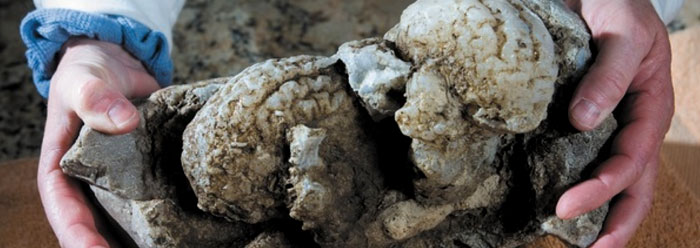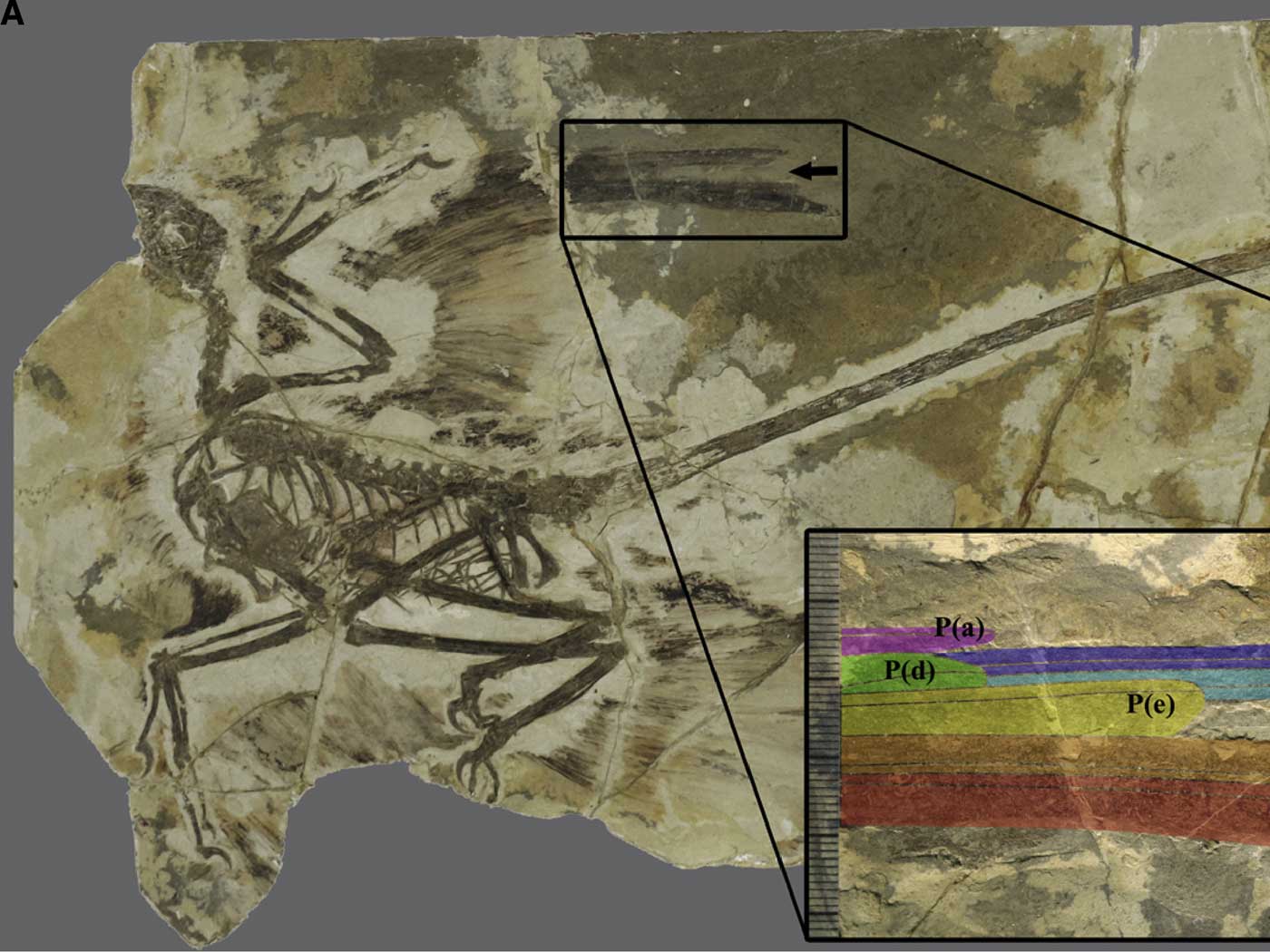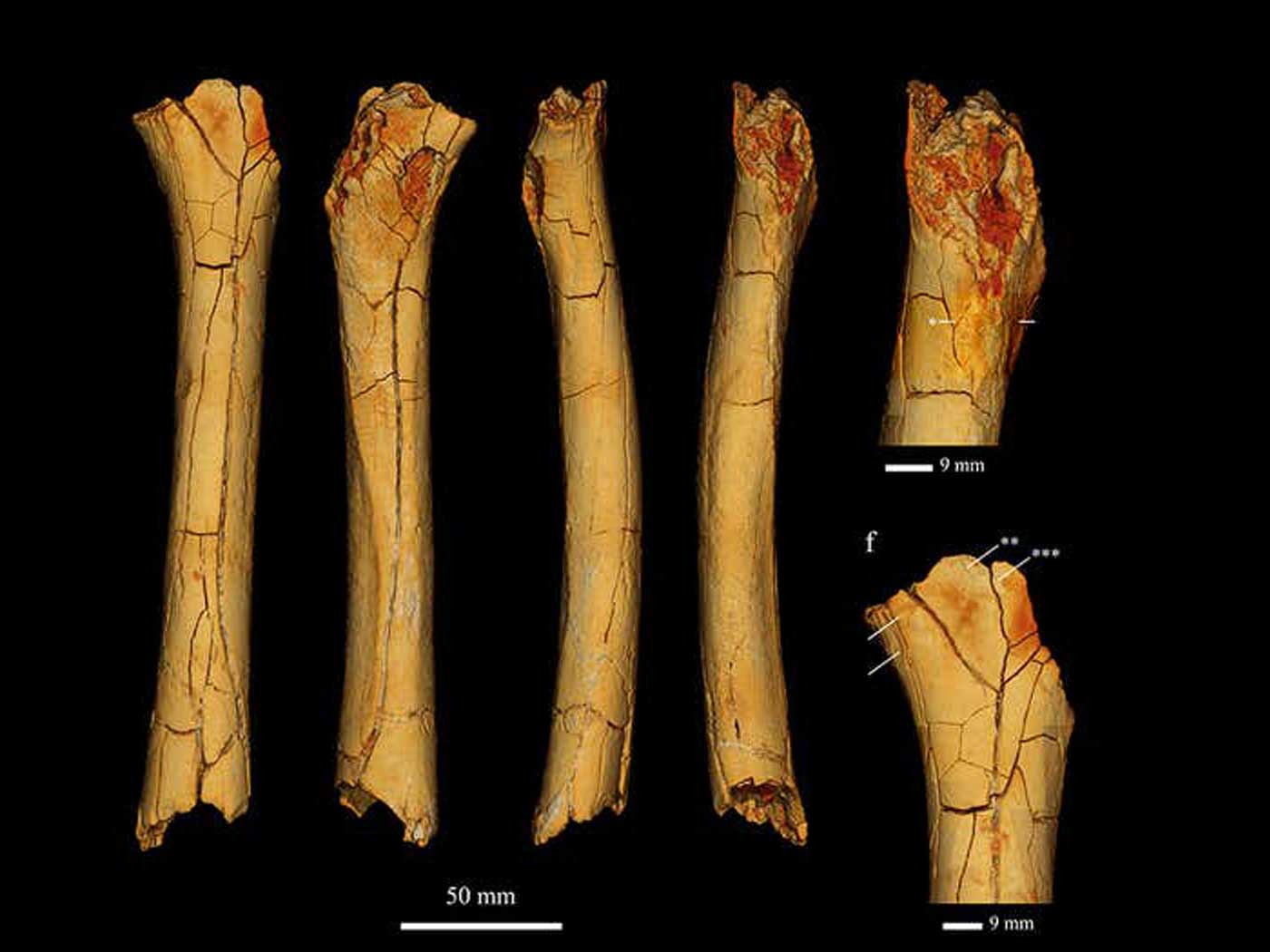Howell Thomas, senior paleontological preparator for the Natural History Museum of Los Angeles County, was skeptical when a woman claimed that she found a fossilized whale brain in San Luis Obispo County, California, nine years ago.
"The first thing I said when I heard about this finding was that there's just no way," Thomas told the Beatrice Daily Sun. "They brought it in, and sure enough, it's the second of two fossil whale brains [ever found]."1
He explained that "it's an amazing specimen because brains don't fossilize because of their soft tissue…. Soft tissue doesn't fossilize, and so the brain is the first thing that deteriorates. To create a situation where this could get fossilized is unheard of."1
Similarly, the San Luis Obispo Tribune reported, "Most fossils are of skeletons, and scientists did not think a mass of soft tissue like a brain could fossilize."2
But this is wrong. Soft tissues can fossilize a few ways, such as by forming impressions in rock, by being replaced by minerals that preserve the original soft tissue shape, and sometimes by a process resembling mummification of the original material.
The real reason why many paleontologists have such a difficult time interpreting soft tissue fossils is because their training tells them to believe that fossils took a long time to form and that they have been residing in earth materials for long spans of "geologic time." Either of these core doctrines works against the possibility of soft tissues still being present in such "ancient" specimens.
The woman who found the fossil in California, Pepper O'Shaughnessy, had been using it as a doorstop in her home. This suggests that the whale brain's soft tissue must have been replaced by mineral, making it heavy enough to hold the door and able to withstand rotting from exposure. But this is not the only example of spectacular Ice Age-deposited whale fossils found on the west coast of the Western Hemisphere, which are best explained as animals that were trapped in pools of water as the floodwaters retreated from the continents in the final stages of the Great Flood.3
In another fossil soft tissue example, a team of paleontologists tested the chemicals that caused red-colored patches in a mummified mosasaur. They published in 2010 their discovery of "hemoglobin decay fragments"4,5 and described the mosasaur's original tissue body scales from nose to tail. The Los Angeles museum where Howell Thomas works had kept the fossil, originally from Kansas, for four decades.
In addition, paleontologists have produced dozens of technical papers describing original tissue fossils, ranging from Ice Age plant tissues that are still green to dinosaur bone marrow with original blood vessels.6,7
After examining the presumably mineralized whale brain, Thomas said, "It just couldn't be anything else. It really is what we say it is."2 And the same is true of original soft tissue fossils that had not been mineralized—they couldn't be anything else, no matter how much of a challenge they present to the dogma of long ages of geologic time.
References
- Koperski, S. A whale of a tale. Beatrice Daily Sun. Posted on beatricedailysun.com January 5, 2012, accessed January 13, 2012.
- Sneed, D. Whale of a find. San Louis Obispo Tribune. Posted on sanlouisobispo.com January 8, 2012, accessed January 13, 2012.
- Thomas, B. Whales in the Desert? ICR News. Posted on icr.org December 20, 2011, accessed January 17, 2012.
- Lindgren J. et al. 2010. Convergent Evolution in Aquatic Tetrapods: Insights from an Exceptional Fossil Mosasaur. PloS ONE. 5 (8): e11998.
- Some have suggested that the mosasaur tissue had been "phosphatized," which occurs when original soft tissues like proteins are replaced by phosphate mineral. Unlike original biological material, phosphatized material would be more likely to persist for millions of years. However, the technical paper reported original protein decay remnants, not phosphatized material, and the scientific journal has not issued any retraction.
- Fossil Analyses with Verified Original Soft Tissues. ICR Fact Sheet. Posted on icr.org July 21, 2011, accessed January 17, 2012.
- Fresh Tissues Show That Fossils Are Recent. ICR Fact Sheet Posted on icr.org, accessed January 17, 2012.
Image credit: David Middlecamp. Copyright © 2012 The Tribune. Adapted for use in accordance with federal copyright (fair use doctrine) law. Usage by ICR does not imply endorsement of copyright holders.
* Mr. Thomas is Science Writer at the Institute for Creation Research.
Article posted on January 27, 2012.
























